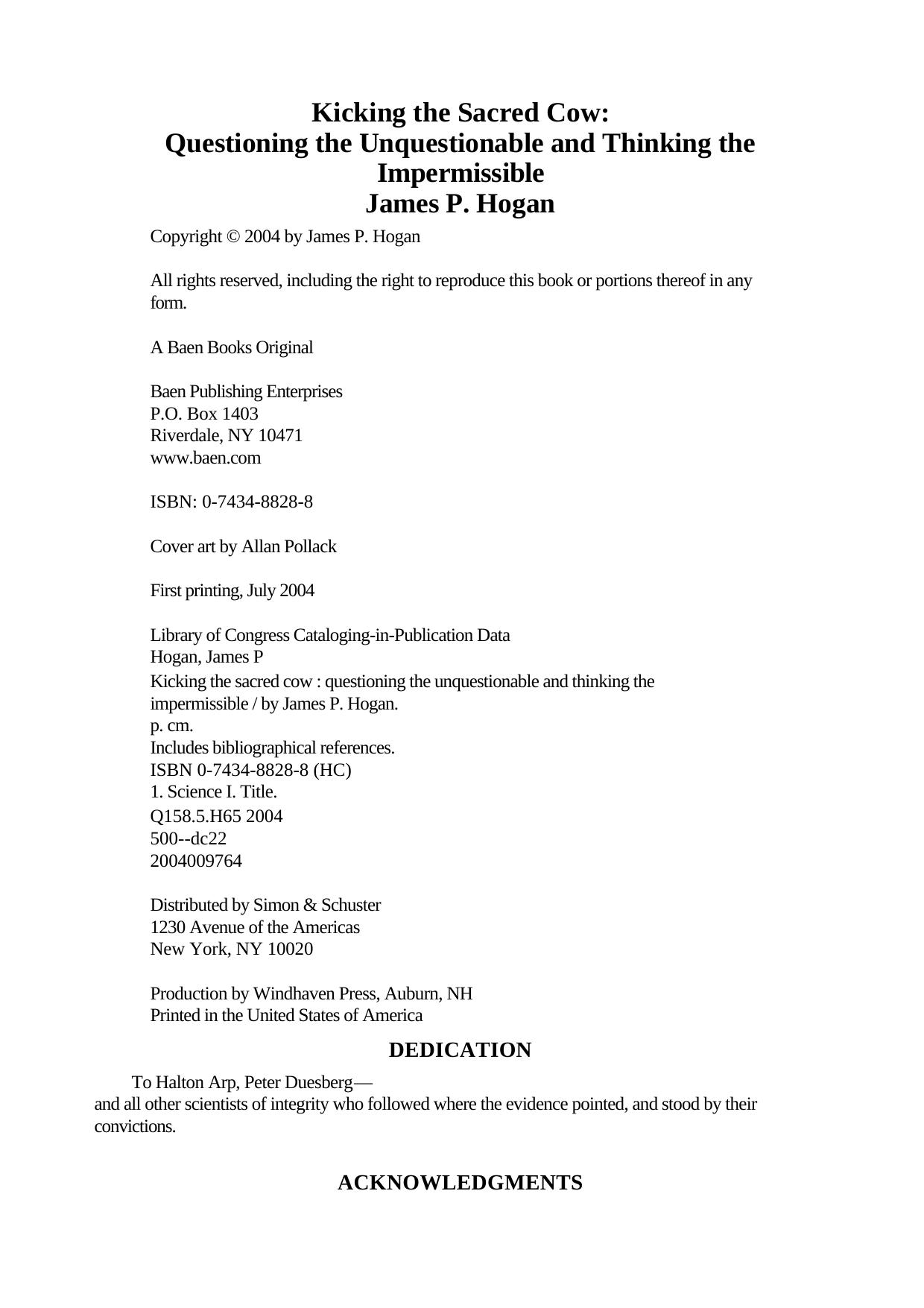Kicking the Sacred Cow by James P. Hogan

Author:James P. Hogan
Language: eng
Format: mobi, epub, pdf
Published: 2011-12-05T00:44:13+00:00
Orthodoxy in Confusion
Embarrassing Confirmations
The reactions after release of Earth in Upheaval were more restrained, possibly because some were beginning to feel that things had gone too far for the good of the professional image the first time. Others no doubt hoped that if they ignored Velikovsky he might just go away. But a big part of the reason could have been that an embarrassing number of his predictions were beginning to be shown as correct.
When Worlds in Collision was published, four Yale University professors had collaborated in preparing a rebuttal in the American Journal of Science, where one of them ridiculed the suggestion that the Mesoamerican civilization appeared to be much older than conventional history allowed. Five years later, the National Geographical Society announced: "Atomic science has proved the ancient civilizations of Mexico to be some 1,000 years older than had been believed." 97 The chief of the Bureau of American Ethnology at the Smithsonian Institution declared this to be the most important archeological discovery in recent history.
Another of the Yale critics scorned Velikovsky's suggestion that petroleum might have a cosmic origin. Two years later, in 1952, P. V. Smith reported in Science (October 24) the "surprising fact" that oil from recently deposited sediments along the Gulf of Mexico could be only thousands of years old. Hydrocarbons were subsequently found in the composition of some types of meteorites. A smallish carbonaceous chondrite asteroid—say, around ten kilometers in diameter—is estimated to contain a trillion tons of them. 98 In 1960, Professor A. T. Wilson of Victoria University in Wellington, New Zealand, produced high-molecular-weight hydrocarbons by electric discharges in Jupiter-like gases and suggested that terrestrial petroleum might have come from elsewhere—a theme that others have taken up since. 99 Both he and Professor W. Libby, chemist at the University of California, speculated that oil might exist on the Moon. By the early 1960s, neon and argon were repeatedly being found in meteorites, too.
In April of the same year as Earth in Upheaval was published, 1955, scientists from the Carnegie Institution startled their audience at a meeting of the American Astronomical Society by announcing the chance detection of unexpected radio emanations from Jupiter, which they had recorded for several weeks before identifying the source. When a Doubleday editor wrote, calling attention to Velikovsky's anticipating just such a finding, one of them replied that even Velikovsky was entitled to a "near miss once in a while." The full extent of the radiation belt encompassing Jupiter, a hundred trillion times more powerful than Earth's, was established in 1960.
Dr. Harry Hess, head of the Department of Geology at Princeton University, who had always been sympathetic toward Velikovsky's theories, submitted a memorandum to the U.S. National Committee in December 1956, proposing as part of the planned agenda for the International Geophysical Year a search for the extended region of terrestrial magnetic influence as Velikovsky had suggested. The Van Allen Belts were discovered in 1958 and featured as one of the high points of the program. In 1960
Download
Kicking the Sacred Cow by James P. Hogan.epub
Kicking the Sacred Cow by James P. Hogan.pdf
This site does not store any files on its server. We only index and link to content provided by other sites. Please contact the content providers to delete copyright contents if any and email us, we'll remove relevant links or contents immediately.
Tools of Titans by Timothy Ferriss(8157)
Turbulence by E. J. Noyes(7895)
Secrets of Antigravity Propulsion: Tesla, UFOs, and Classified Aerospace Technology by Ph.D. Paul A. Laviolette(5237)
Astrophysics for People in a Hurry by Neil DeGrasse Tyson(5095)
Room 212 by Kate Stewart(4963)
Design of Trajectory Optimization Approach for Space Maneuver Vehicle Skip Entry Problems by Runqi Chai & Al Savvaris & Antonios Tsourdos & Senchun Chai(4957)
Pale Blue Dot by Carl Sagan(4858)
The David Icke Guide to the Global Conspiracy (and how to end it) by David Icke(4557)
A Journey Through Divination and Astronomy by Publishing Pottermore(4321)
Goodbye Paradise(3666)
Apollo 8 by Jeffrey Kluger(3599)
COSMOS by Carl Sagan(3514)
Losing the Nobel Prize by Brian Keating(3478)
The Five People You Meet in Heaven by Mitch Albom(3435)
How to Read Water: Clues and Patterns from Puddles to the Sea (Natural Navigation) by Tristan Gooley(3372)
Brief Answers to the Big Questions by Stephen Hawking(3319)
How to Read Nature by Tristan Gooley(3213)
The Order of Time by Carlo Rovelli(3097)
A Brief History of Time by Stephen Hawking(2912)
